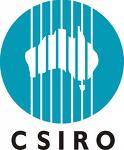environment jobs Est. in 1994. Delivering Environment Jobs for 30 years
| Title | 'Barcoding blitz' on Australian moths and butterflies |
| Posted |
|
|
|||||||||||||||||||
| Description |
 'Barcoding blitz' on Australian moths and butterfliesReference: 11/41 In just 10 weeks a team of Canadian researchers has succeeded in 'barcoding' 28,000 moth and butterfly specimens – or about 65 per cent of Australia’s 10,000 known species – held at CSIRO's Australian National Insect Collection (ANIC) in Canberra.
5 May 2011
Conducted in collaboration with the Atlas of Living Australia (ALA) as part of the International Barcode of Life (IBoL), the project involved extracting DNA from each specimen to record its unique genetic code and entering the results, together with an image and other details, to the ALA and ANIC databases. ANIC is the first national collection to integrate the new barcoding approach for a major group of insects. The Collection's Director, Dr John La Salle, said DNA barcoding is a kind of ‘genetic fingerprinting’ which has proven useful in identifying different forms of life. "Barcoding will be critically important to our goal of being able to rapidly identify most organisms on the planet within the next decade or so," Dr La Salle said. ANIC is the first national collection to integrate the new barcoding approach for a major group of insects.
"This will produce strong benefits for entomology, life sciences and biosecurity." He said barcoding has already achieved some interesting successes in, for example, Europe and the US where it is being used to investigate food fraud, such as selling one type of fish as another type of fish. According to Atlas of Living Australia Director, Donald Hobern, many moths and butterflies are of economic and/or environmental importance to Australia. "Using barcoding for rapid species identification will transform how we handle monitoring of biodiversity across Australia and how we respond to potential pest arrivals at Australian borders," Mr Hobern said. "Barcoding for rapid species identification is a powerful new tool which will also assist taxonomists in recognising and describing new species." Read more media releases in our Media section. |
